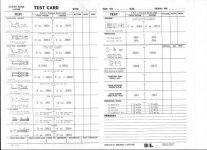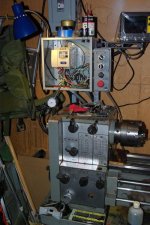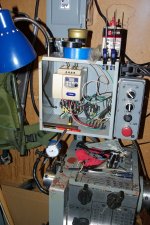Harrison M300 /DoAll 13" lathe
Anybody have any experience with a Harrison M300 13" lathe? I believe it was manufactured in England. Also has a DoAll 13" sticker on it. Also has a 3HP 3PH motor. I would like to install a 220V solid sate phase converter and wonder if I should bypass all the controlls and wire the motor direct with a 220V magnetic starter? I've been watching a VFD drive on Ebay auction 3006 5288 6556. Would this be suitable for converting the 3HP 3PH motor that's on the lathe?
Anybody have any experience with a Harrison M300 13" lathe? I believe it was manufactured in England. Also has a DoAll 13" sticker on it. Also has a 3HP 3PH motor. I would like to install a 220V solid sate phase converter and wonder if I should bypass all the controlls and wire the motor direct with a 220V magnetic starter? I've been watching a VFD drive on Ebay auction 3006 5288 6556. Would this be suitable for converting the 3HP 3PH motor that's on the lathe?
Last edited:














